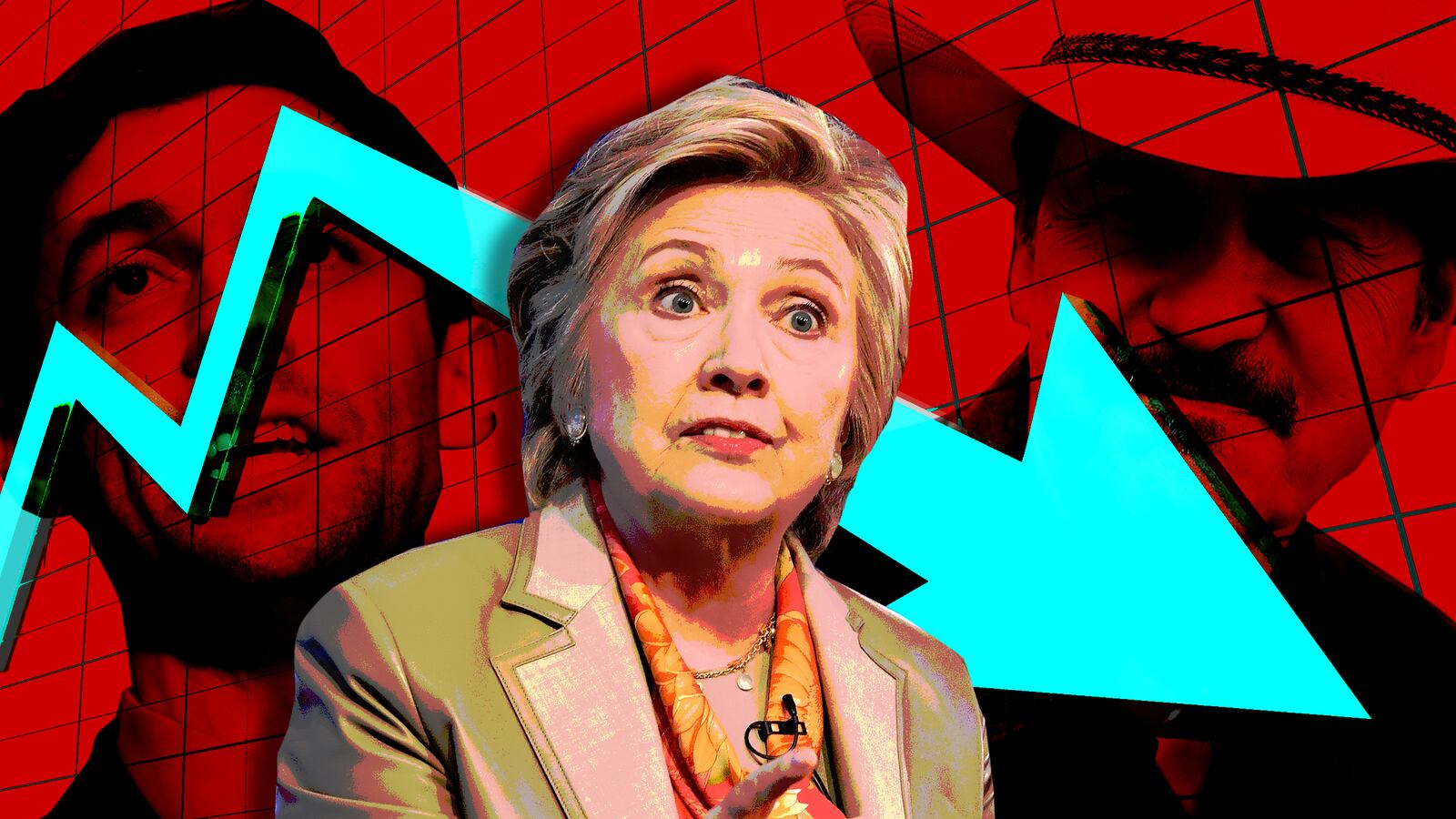It didn’t make any sense. After all the inspiring marches that photograph so beautifully from above. After all those congressional town-hall dressings down, in Southern and Midwestern regional inflections, straight from ordinary folk. After all that money and all that attention and all the excitement of the resistance, directed, laser-like, at a single congressional race in Georgia, the Democrat lost. Again!
The consensus take is that Jon Ossoff’s loss in the special election in Georgia’s sixth district was a real blow for Democrats. For “morale.” Ossoff, the twenty-six million dollar man, presented like an amateur attempt at recreating President Obama. Lanky, sincere, handsome in a nerdy way. He lost just as Rob Quist, a cowboy hat with a face, had lost in Montana weeks prior. Ossoff lost even though his opponent, Republican Karen Handel, said she doesn’t stand for a living wage. Quist lost even after his opponent body slammed a reporter. Both Democrats lost after oversized amount of attention and expectations were heaped on them, much of it from outside, much of it sudden. Much of it by a party apparatus that seems to have no idea how to effectively manage expectations or resources.
As I watched Democrats’ Ossoff dreams deflate in real time Tuesday, I thought about other times I’d witnessed imagined value crash unpleasantly into reality.
In September 2008, I was working at a Merrill Lynch brokerage office in downtown Chicago. I wasn’t in the part of the company that history would remember as the architects of the financial crash, the part that bundled bad mortgages into pools of poison; we were in the business of helping moderately rich people buy and sell stocks and mutual funds. Nothing particularly evil, as far as finance goes. Our clients drove expensive but sensible cars and sent their kids to public high schools and private colleges.
There were two large computer monitors on my desk. The one on the left I used for things like email and fucking around online when I should have been working. The one on the right displayed the behavior of certain stocks and indices on a black background, hundreds in total. When an individual stock would tick up in price, it would light up green. When it ticked down, it would light up red. When nothing was happening, all of the text was grey.
On the morning of September 15, we were all prepared for something bad to happen. The market’s sour mood over the last year or so had put people in our corner of the industry in a constant state of flinch. Every day it was something, and when it was nothing, you knew the next day’s something would be even worse. That day, when the stock market opened in New York, my monitor immediately turned from grey to red, and it stayed that way all day, blinking like a Vegas casino sign on the fritz. Nobody was in a good mood. This was bad in a way that was much bigger than us.
The Bush administration announced a bailout that week, but it wasn’t enough to halt the market freefall. Not right away, at least. Two weeks later, on September 29, the market experienced its biggest ever single-day drop. In the months that followed, it kept lurching to a promising start followed by a demoralizing stop, like a subway car during rush hour.
Bubbles—as in finance, not as in whimsy—have formed and popped for almost as long as people have been buying and selling. In 1637, a Tulip bubble drove anthophiles to pay more for flower bulbs than some paid for houses.
In 1996, right around the time when parents of children were snapping up Beanie Babies with the hope that the toys would one day be worth thousands, then-Federal Reserve Chair Alan Greenspan warned investors against succumbing to “irrational exuberance.” The internet was pretty new, and everybody with money and dreams wanted a piece of what they imagined it could be, maybe, in the future. Friendster, MySpace, Facebook, and Pepe were nary a glint in our eyes, and nobody was really sure how it could make them money in a real way. But investors were hyped about the new technology, and in a battle between prudence and greed, greed almost always wins, until it loses.
From 1997 until 2001 investors gobbled up shares of dot-com companies with weak fundamentals. By the early aughts, the darlings of the dot-com boom had imploded spectacularly. Qualcomm lost more than 80% of its value. Meanwhile, across America, chastened Beanie Baby collectors placed their goofy toys with the tags still attached into tupperware storage containers.
Bubbles pop in a second in nature; there’s no excruciating ratcheting down, no speculation about where the bottom might be. But when it comes to money and expectations, the only way to know something was a bubble is to experience the crash when its meager support gives way. Exuberance is only irrational in retrospect.
I’ve been thinking about tulips, Alan Greenspan, and the Pets.com sock puppet a lot lately, and not only because I’ve been having the strange dreams that come with a summer cold. Jon Ossoff and Rob Quist’s defeats didn’t need to feel as big as they did. They only felt so big because they their campaigns had been over-valued and over-imbued with meaning. Both men’s respective worth as candidates was run up in value by enthusiasm feeding and inflating itself, not on what market analysts would call fundamentals. Money poured in. Speculators wanted an underlying entity to be more valuable than it was. Classic bubble behavior.
One of the legacies of the Obama era is lingering unrealistic expectations. Quiet losses for Democrats in 2010 and 2014 led to a loud one in 2016. State houses have turned red across the country, redistricting has strengthened Republicans hold on the House. In all likelihood, Democrats weren’t ever going to win that seat in Montana, or that seat in Georgia. Hillary Clinton was a much weaker candidate than her supporters and the media were willing to give voice to. On November 9, the only sound in the Javitz center was the sound of a crash that had already happened.
Pop, pop, pop.
But recent disappointments haven’t proven chastening.
On the same day Ossoff’s candidacy evaporated, a new candidate into which the “resistance” could pour its time and resources emerged. His name is Randy Bryce, he is running for Paul Ryan’s seat in Wisconsin’s first district, and he has lost every single political office he’s run for. But political watchers went apeshit over Bryce’s two-minute debut ad, because Bryce embodies what this Wisconsin native recognizes as a hacky coastal idea of what midwestern folksiness should look and sound like. The tinder-box virality of this ad betrays the cynical expectation that voters cast ballots the way reality-TV producers cast shows.
The ad has been viewed 350,000 times. The last time a sitting House Speaker lost reelection was in 1994. Before that, it was 1862.
Hope is important, but without a healthy dose of reality-based pragmatism, it amounts to little more than irrational exuberance.






